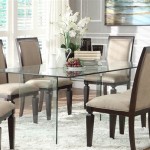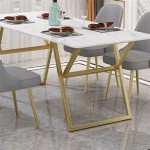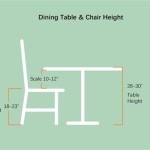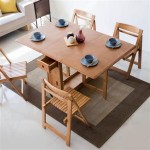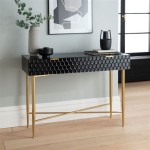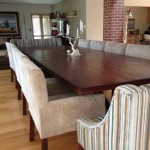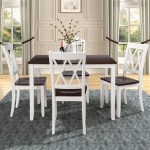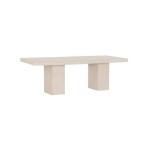Dining Room Table Extension Hardware: A Comprehensive Guide
Dining room tables often serve as the focal point for gatherings, from intimate family dinners to larger celebrations. The ability to adapt the table's size to accommodate varying numbers of guests is a desirable feature. Extension hardware plays a crucial role in enabling this function, allowing tables to expand and contract with ease. This article provides a detailed examination of dining room table extension hardware, exploring its various types, mechanisms, materials, and factors to consider when selecting the appropriate hardware for a particular table design.
Types of Dining Room Table Extension Mechanisms
Numerous extension mechanisms exist, each offering a unique approach to increasing table surface area. These mechanisms vary in complexity, ease of use, and the aesthetic impact on the overall table design. Understanding the different types is essential for choosing the best fit for a specific application.
Slide Mechanisms: Slide mechanisms are among the most common and straightforward. They typically consist of two or more sets of metal slides that run parallel to each other beneath the tabletop. The tabletop is split into two or more sections that can be pulled apart, revealing a space in the center into which extension leaves can be inserted. The slides provide a smooth and stable platform for extending and retracting the tabletop sections. Within the category of slide mechanisms, there are several variations, including:
Wooden Slides: Traditionally, wooden slides were used, often crafted from hardwoods like maple or oak to provide strength and durability. While still available, they are less common due to potential issues with warping or binding in humid conditions. However, high-quality wooden slides, properly seasoned and finished, can offer a classic aesthetic and a smooth gliding action.
Metal Slides: Modern metal slides are typically constructed from steel or aluminum, offering superior strength and resistance to moisture and temperature variations. They are often coated with a corrosion-resistant finish to ensure long-term durability. Metal slides come in a variety of weight capacities and extension lengths, making them suitable for a wide range of table sizes and extension leaf configurations. Ball-bearing slides are a popular subtype, providing particularly smooth and effortless operation.
Drop Leaf Mechanisms: Drop leaf mechanisms offer a different approach, utilizing hinged extensions that fold down when not in use. These are often found on smaller tables where space is a premium. The leaves are supported by hinged brackets or support legs that swing out to hold the leaf in the extended position. Drop leaf mechanisms are relatively simple and inexpensive, but they may not provide the same level of stability and support as slide mechanisms, especially for larger leaves.
Butterfly Leaf Mechanisms: Butterfly leaf mechanisms feature an extension leaf that is stored folded underneath the tabletop. When needed, the leaf is unfolded and pivots into position, filling the gap created when the table is extended. This type of mechanism is particularly convenient as it eliminates the need to store separate extension leaves. However, butterfly leaf mechanisms can be more complex to install and may require more precise alignment than other types.
Gear Mechanisms: Gear mechanisms utilize a set of interlocking gears to synchronize the movement of the tabletop sections. This ensures that the sections move smoothly and evenly, maintaining a consistent gap for inserting the extension leaves. Gear mechanisms are often found on high-end tables and offer a sophisticated and reliable method of extension. They can be more expensive than other types, but their precision and durability justify the cost for certain applications.
Materials Used in Extension Hardware
The materials used in the construction of extension hardware significantly impact its strength, durability, and overall performance. Choosing the right materials is critical for ensuring that the table extension mechanism functions reliably for years to come.
Steel: Steel is a common material for metal slides and support components due to its high strength and relatively low cost. Different grades of steel are used, with higher grades offering increased strength and resistance to corrosion. Steel components are typically coated with a protective finish, such as zinc plating or powder coating, to prevent rust and corrosion.
Aluminum: Aluminum is another popular choice for metal slides, particularly in applications where weight is a concern. Aluminum is lighter than steel but still offers good strength and corrosion resistance. Anodized aluminum is often used for its enhanced durability and aesthetic appeal.
Wood: Wood, as mentioned earlier, is used for traditional slides and for the support components in drop leaf mechanisms. Hardwoods like maple, oak, and birch are preferred for their strength and resistance to wear. Wood components are typically finished with a protective coating, such as varnish or lacquer, to prevent moisture absorption and damage.
Plastics: Plastics, such as nylon and polyethylene, are sometimes used for bushings, rollers, and other small components in extension mechanisms. These materials offer low friction and good wear resistance, contributing to smooth and quiet operation. High-quality plastics are resistant to cracking and degradation over time.
Fasteners: The fasteners used to assemble and install the extension hardware are also critical to its overall performance. Screws, bolts, and rivets should be made from durable materials and properly sized for the application. Stainless steel fasteners are often preferred for their superior corrosion resistance.
Factors to Consider When Selecting Extension Hardware
Choosing the appropriate extension hardware for a dining room table involves considering a variety of factors, including the table's size, weight capacity requirements, desired extension length, ease of use, and aesthetic compatibility. A careful assessment of these factors will help ensure that the chosen hardware meets the specific needs of the table and the user.
Table Size and Weight Capacity: The size and weight of the tabletop and extension leaves are primary considerations when selecting extension hardware. Larger and heavier tables require stronger and more robust hardware to provide adequate support and stability. The weight capacity of the chosen hardware should be sufficient to support the weight of the extended tabletop, including any items placed on it.
Extension Length: The desired extension length will determine the type and size of the extension mechanism needed. Longer extensions typically require more complex and robust mechanisms to maintain stability and prevent sagging. It is important to measure the available space in the dining room to ensure that the extended table will fit comfortably.
Ease of Use: The ease with which the table can be extended and retracted is an important consideration, particularly for tables that are frequently extended and retracted. Mechanisms with smooth gliding action and intuitive locking mechanisms are generally preferred. Consider the physical limitations of the individuals who will be using the table and choose a mechanism that is easy to operate for them. Gear mechanisms and ball-bearing slides often provide the smoothest and easiest operation.
Aesthetic Compatibility: The extension hardware should be aesthetically compatible with the overall design of the table. The hardware should be discreet and unobtrusive when the table is in its retracted position, and it should not detract from the table's appearance when extended. Consider the finish and style of the hardware and choose components that complement the table's design.
Durability and Longevity: The durability and longevity of the extension hardware are crucial factors to consider, particularly for tables that are expected to last for many years. Choose hardware made from high-quality materials and with a durable finish. Inspect the hardware for any signs of weakness or potential failure points. Consider the manufacturer's reputation and warranty when making a purchase.
Installation Requirements: The ease of installation should also be considered, especially for those who plan to install the hardware themselves. Some extension mechanisms are relatively easy to install, while others require more specialized tools and skills. Consider the instructions provided with the hardware and assess your own capabilities before attempting the installation. If unsure, it is best to consult with a professional furniture maker or installer.
Cost: The cost of extension hardware can vary significantly depending on the type, materials, and complexity of the mechanism. It is important to set a budget and compare the prices of different options before making a purchase. Remember that higher-quality hardware may cost more initially, but it can offer better performance and longevity, potentially saving money in the long run. Striking a balance between cost and quality is essential for making a wise investment.
By carefully considering these factors, individuals can select the dining room table extension hardware that best meets their specific needs and ensures that their table can adapt to accommodate gatherings of all sizes with ease and elegance.

Complete Guide To Dining Table Extensions With S Cabinfield Blog

T Able Xl Iii Table Extension Mechanism 4119 Series Richelieu Hardware

Pull Out Tables Unlock Space Efficiency With Advanced Metal Extension Slides

Salvaged Wood Trestle Rectangular Extension Dining Table Rh

Making A Table Expand Finewoodworking

Versoto Extending Table Mechanism Richelieu Hardware

Diy Extension Table How To Install Slides And Locks Builder S Studio

St James Rectangular Extension Dining Table

Hardware

Pull Out Tables Unlock Space Efficiency With Advanced Metal Extension Slides

